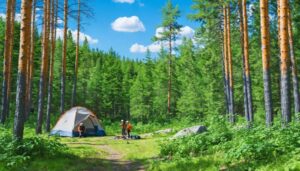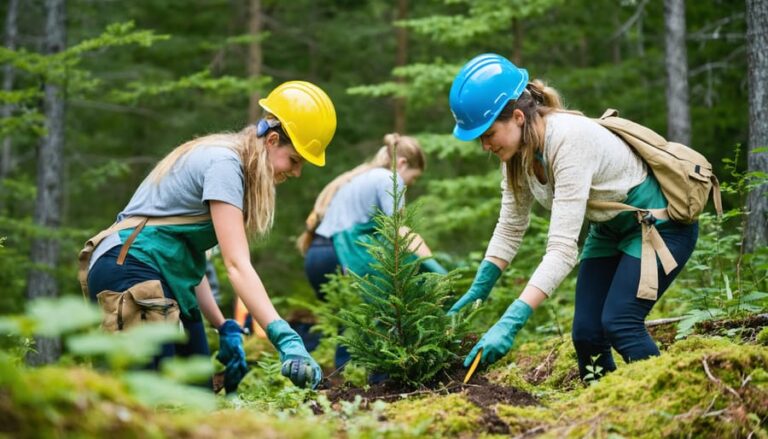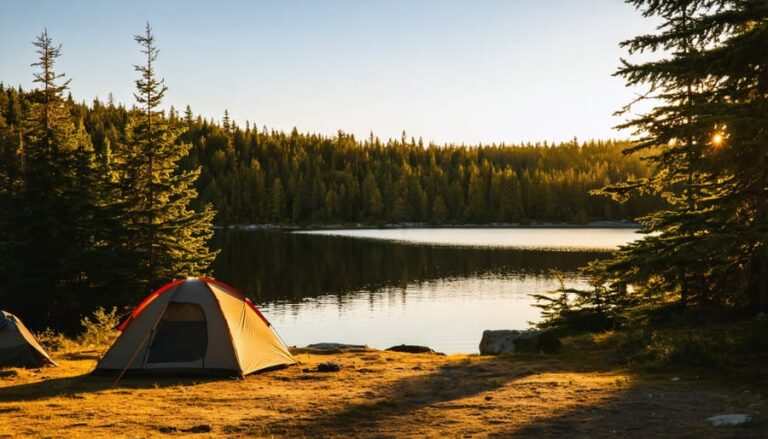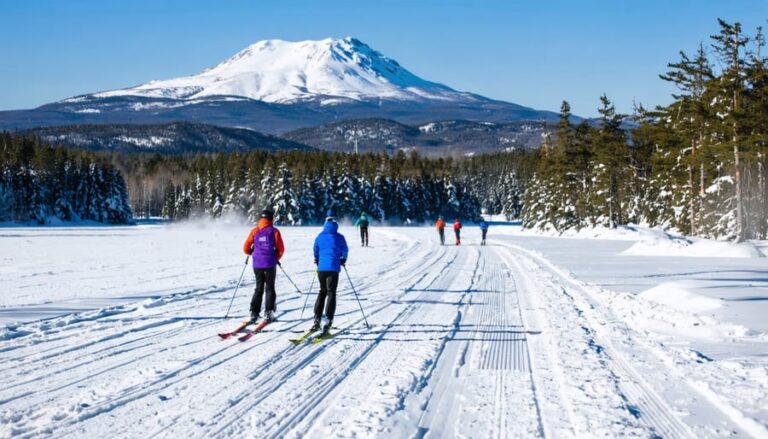Leave No Trace principles serve as the cornerstone of responsible outdoor exploration in Ontario’s provincial parks and wilderness areas. These seven fundamental guidelines transform casual visitors into mindful stewards of nature, ensuring our wild spaces remain pristine for generations to come. By embracing these principles – from planning ahead and traveling on durable surfaces to properly disposing of waste and respecting wildlife – we protect the delicate balance of our natural ecosystems while creating meaningful outdoor experiences. Whether you’re an experienced backpacker or a first-time camper, understanding and practicing Leave No Trace isn’t just about following rules; it’s about fostering a deeper connection with nature while minimizing our environmental impact. As more people discover the healing power of outdoor recreation, these principles become increasingly crucial for preserving the wild character and ecological integrity of our cherished natural spaces.
Plan Ahead and Prepare
Essential Pre-Trip Planning
Before hitting the trails in Ontario’s parks, careful planning is your best friend for minimizing environmental impact. Start by checking the Ontario Parks website for up-to-date permits and reservations – these aren’t just formalities, they help manage visitor numbers and protect sensitive areas. During peak seasons (July-August), book well in advance, especially for popular destinations like Algonquin Park.
Consider timing your visit during shoulder seasons (May-June or September-October) when trails are less crowded. Research current weather conditions and trail statuses, and pack appropriate gear to avoid emergency situations that could harm the environment. Remember to bring reusable containers, biodegradable soap, and a detailed map. Local regulations can vary by park and season, so take time to familiarize yourself with specific rules about campfires, food storage, and permitted activities at your chosen destination.

Travel and Camp on Durable Surfaces

Campsite Selection in Ontario’s Backcountry
When selecting your campsite in Ontario’s backcountry, following eco-friendly camping practices is essential. Look for established sites with durable surfaces, typically marked on park maps. In rocky areas like Killarney, set up camp on bare rock or gravel to minimize impact. For forested regions like Algonquin, choose spots where vegetation is already absent or compacted.
Stay at least 30 meters from water sources and trails to protect wildlife corridors and maintain water quality. Avoid camping under dead trees or branches (widow-makers), and never create new tent pads or clear vegetation. In popular areas like the Georgian Bay coastline, stick to designated sites to prevent shoreline erosion.
Remember, good campsites are found, not made. The perfect spot will have natural wind protection, be relatively flat, and show minimal signs of human presence while still being practical for your needs.
Dispose of Waste Properly
When exploring Ontario’s beautiful parks, proper waste disposal is crucial for preserving our natural spaces. Remember the golden rule: pack it in, pack it out. This means everything you bring into the park must leave with you, including food scraps, packaging, and even fruit peels (yes, even those banana peels take years to decompose!).
For bathroom breaks on the trail, dig a cathole at least 15-20 centimeters deep and 70 meters away from water sources, campsites, and trails. Cover it well after use and pack out your toilet paper – those thin white flags scattered around the wilderness aren’t exactly natural décor!
In Ontario’s backcountry, carry a sealed container for your trash. I always bring two bags: one for regular waste and another for recyclables. This makes sorting easier once you’re back in civilization. For food waste, use odor-proof containers to avoid attracting wildlife – trust me, you don’t want a midnight visit from a curious black bear!
When camping, check your site thoroughly before leaving. Those tiny bits of microtrash like twist ties or candy wrappers can harm wildlife. Pro tip: I always do a final “sweep” of my campsite by walking in a spiral pattern from the outside in – it’s amazing what you might spot from different angles.
Remember, leaving no trace means leaving zero waste behind, whether it’s visible or buried. This helps keep our parks pristine for future generations of adventurers.
Leave What You Find
Ontario’s natural and cultural heritage is like a living museum, telling stories of our past and present. When you come across artifacts, plants, or interesting objects during your outdoor adventures, remember that these pieces belong right where you found them. That shell on the beach might be a future home for a hermit crab, and that interesting rock could be part of a delicate ecosystem.
Taking photos is a wonderful way to preserve memories without disturbing the environment. If you spot wildflowers, resist the urge to pick them – let others enjoy their beauty too! This is especially important for rare species that might be protected.
Historical artifacts, like old bottles or building remnants, offer glimpses into Ontario’s past. Leave these treasures in place for others to discover and learn from. Even seemingly abundant items like pinecones and feathers play important roles in the ecosystem. Building temporary structures? Make sure to completely dismantle them before leaving.
Remember, every natural object tells a story. By leaving what you find, you’re helping preserve these stories for future generations to discover and enjoy.
Minimize Campfire Impact
When it comes to campfires in Ontario’s parks, remember that less is more. Always check local fire regulations first, as some areas may have fire bans during dry seasons. If fires are permitted, use existing fire rings or designated fire pits rather than creating new ones.
Keep your fires small and manageable – about the size of a laptop screen is perfect for cooking and warmth without excessive impact. Collect only fallen, dead wood no thicker than your wrist, and gather from a wide area to avoid depleting any single spot. Never break branches off living trees or strip bark, as this damages the forest’s health.
Before lighting your fire, ensure you have enough water nearby to fully extinguish it. When you’re done, drown the fire completely until the ashes are cold to the touch – if they’re too hot to hold, they’re too hot to leave. Scatter the wet ashes and restore the site to its natural appearance.
Pro tip: Consider using a lightweight camping stove instead of a fire when possible. They’re more efficient for cooking and leave zero trace behind!
Respect Wildlife
Ontario’s diverse wildlife is one of our province’s greatest treasures, and observing these creatures in their natural habitat can be incredibly rewarding when done responsibly. The key to protecting Ontario’s wildlife habitats is maintaining a respectful distance and avoiding any interference with animal behavior.
Never feed wild animals, as this can alter their natural foraging habits and make them dependent on human food. Keep your distance when spotting larger animals like moose, black bears, or deer – a good rule of thumb is staying far enough that you can hide the animal behind your thumb when your arm is extended.
Store your food properly in sealed containers or bear-proof storage when camping. This prevents curious critters from raiding your campsite and helps maintain their natural feeding patterns. During spring and early summer, be extra cautious around nesting areas and baby animals.
If you’re bringing your dog along, keep them leashed and under control. Even well-behaved pets can stress wildlife and disturb their natural behaviors. Remember, we’re visitors in their home – let’s make sure we’re good guests!

Be Considerate of Other Visitors
When exploring Ontario’s beautiful parks, remember that you’re sharing these special places with others who are also seeking peaceful outdoor experiences. Keep noise levels down by speaking quietly and avoiding loud music – natural sounds are part of everyone’s wilderness experience. If you’re hiking or biking, yield to other trail users and pass on the left after giving a friendly heads-up. When taking photos or enjoying scenic spots, be mindful not to block trails or viewpoints for extended periods. Camp in designated areas and maintain reasonable distance from other campsites to preserve everyone’s sense of solitude. And remember, while your furry friends are welcome in many areas, keep them leashed and under control to ensure all visitors feel comfortable and safe.
Following Leave No Trace principles isn’t just about rules – it’s about being a guardian of Ontario’s natural wonders. Every time we pack out our trash, stick to marked trails, or keep our distance from wildlife, we’re contributing to a larger story of conservation. These simple actions, when multiplied by thousands of visitors, create a powerful impact that ensures our parks remain pristine for generations to come.
Remember, the wilderness is our shared inheritance. Whether you’re camping in Algonquin, hiking the Bruce Trail, or enjoying a day trip to Killarney, your choices matter. By embracing these principles and sharing them with fellow outdoor enthusiasts, you become part of a community dedicated to preserving Ontario’s natural beauty. Let’s make every adventure count by treading lightly and leaving only footprints in the snow, sand, or soil beneath our feet.














+ There are no comments
Add yours